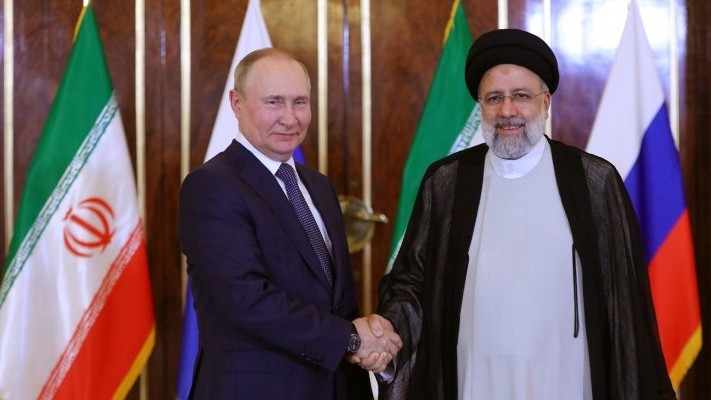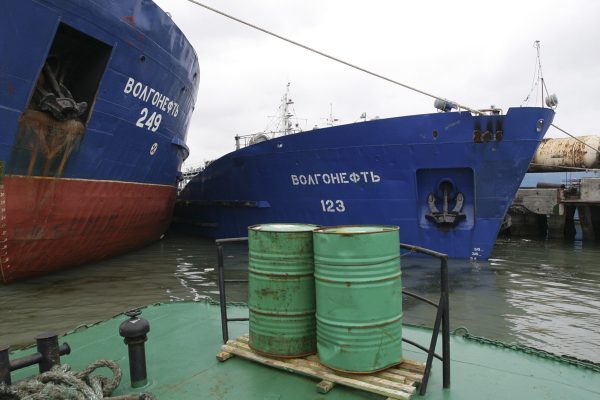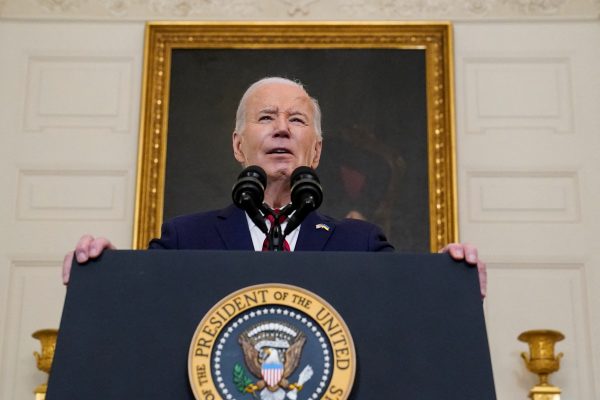There is worryingly little information about what Russian military assistance is flowing to Iran. But given Iran’s record, nuclear and overall military ambitions, this military aid may be every bit as dangerous — or even more so — than the weapons it has transferred to Russia.
It is of course hopeless to expect these inherently secretive states to declare what exactly they are sharing with each other.
But several American and other Western sources have registered alarm at what they call an unprecedented and full-fledged military relationship, where in return for ammunition, drones, and possibly ballistic missiles, Russia provides components, or technology for Iran’s conventional and even potentially nuclear programs. Thus they are working on building joint drone production lines at a factory in Russia.
Besides this collaboration, American intelligence officials believe Iran is seeking Russian help in acquiring nuclear materials and nuclear fuel fabrication. More recently it has been learned that Iran is in secret talks with both Russia and China to obtain a sanctioned missile fuel, or the chemical component ammonium perchlorate, to propel ballistic missiles. Similarly, Irano-Russian space collaboration has grown due to recent bilateral agreements. Iran hopes this agreement will help it achieve manned space flight and improved, or even joint satellite placement in space.
In the cyber domain, both sides already signed a 2021 agreement to cooperate on information and cyber security. Indeed, there are recent reports of Russia supplying Iran with cyber weapons. Specifically, these weapons or systems are communication-surveillance capabilities, as well as eavesdropping equipment, advanced photography devices, and lie detectors. It is also believed that Moscow has already given Iran, “more advanced software that would allow it to hack the phones and systems of dissidents and adversaries.”
But perhaps equally importantly, Iran is seeking and frequently obtaining (according to foreign reports) critical conventional weapons systems. Russia has reportedly shipped models of captured US weapons to Iran, e.g. Javelin anti-tank and Stinger anti-air missiles. Iran is also known to be seeking helicopters, ships and new maritime designs, and S-400 anti-air missiles. The S-400 is obviously intended to protect its nuclear and missile programs from an Israeli air strike, but reports of a planned acquisition of that system might actually lead the US or Israel to launch a preemptive strike. Finally, Iran has now signed an agreement with Russia to obtain the Su-35 combat aircraft, a move that will have repercussions across the Middle East.
The deals cited here only reflect the military dimension of the Russo-Iranian tandem. That is not by any means the only element in their increasing partnership and comity. For instance, there is a thriving commercial and economic partnership growing up parallel to this military relationship.
Nevertheless, the military aspect of their ties is the most troubling element. This will present Russia with extensive opportunities to obtain an unlimited supply of highly lethal weapons beyond the reach of both Ukraine and the West. Second, it points to a potential widening of the war to the Middle East, where Iran is at loggerheads with most if not all of its neighbors in this region and in the Caucasus with Azerbaijan. Were either contingency to appear, the war with Ukraine could then expand into a truly global conflict embracing more than one theater and several other states, including US allies like Israel or Turkey.
Third, the fact that Iran is negotiating with both China and Russia for chemical components for missile fuel raises the prospect of a new if informal triple alliance against the US and its allies from Europe to the Pacific, but centering on the Middle East, Central Asia, and the Indian Ocean. Here we should remember that these three states have already conducted two sets of combined naval drills in 2019 and 2022. The opportunities for growth in multilateral military cooperation, so extending the Sino-Russian military alliance, are immense and could extend their conjoined policies into an enormous expanse of land and sea territories.
Fourth, and finally, the possibility of either or both Russia and China abetting Iran’s nuclear program, now that the 2015 JCPOA (Joint Comprehensive Plan Of Action) appears to be irretrievable, is exceedingly dangerous both for non-proliferation in the Middle East or Asia, and for the ways such a partnership will likely precipitate further conflicts in the Middle East. Nor would such conflicts necessarily be limited to Israel vs. Iran; they could escalate both geographically and also beyond conventional war.
Iran sits in the eye of many potential hurricanes and its developing military partnership with Russia adds to the potential that the war in Ukraine will not stay in Ukraine.
Stephen Blank is Senior Fellow, Foreign Policy Research Institute. Fpri.org
Europe’s Edge is CEPA’s online journal covering critical topics on the foreign policy docket across Europe and North America. All opinions are those of the author and do not necessarily represent the position or views of the institutions they represent or the Center for European Policy Analysis.





